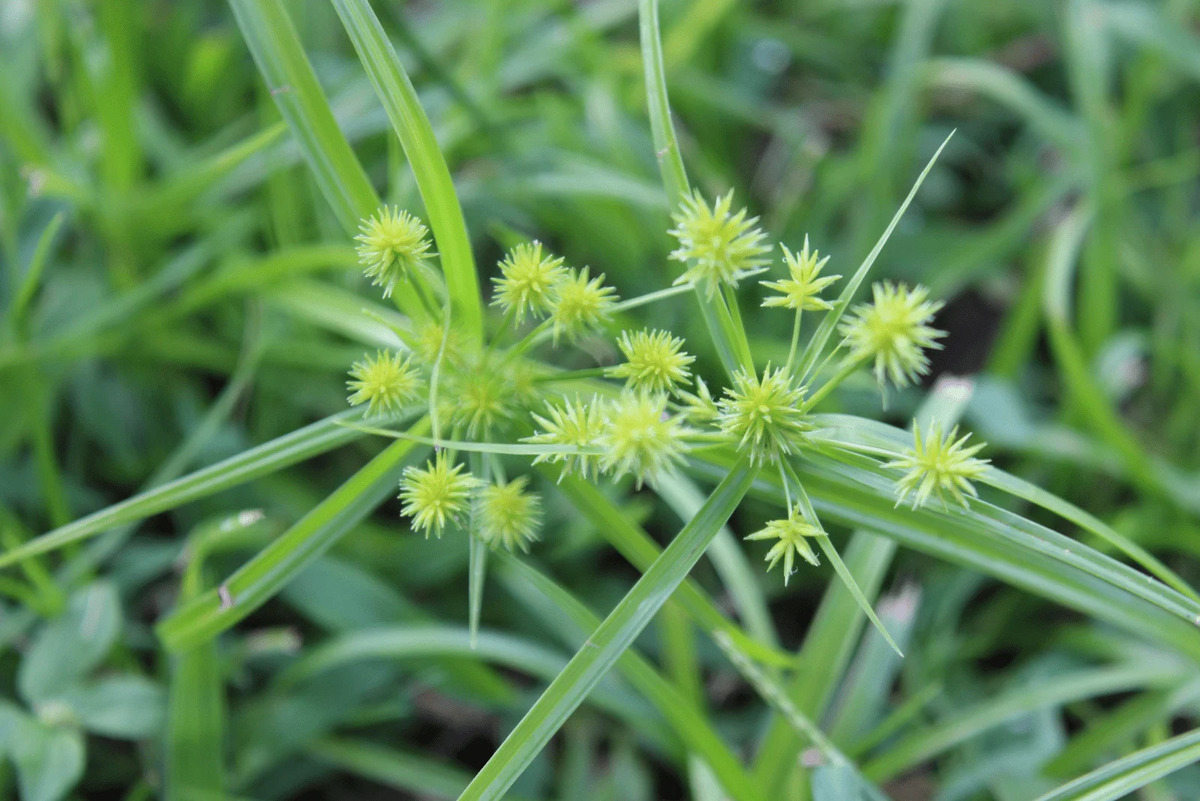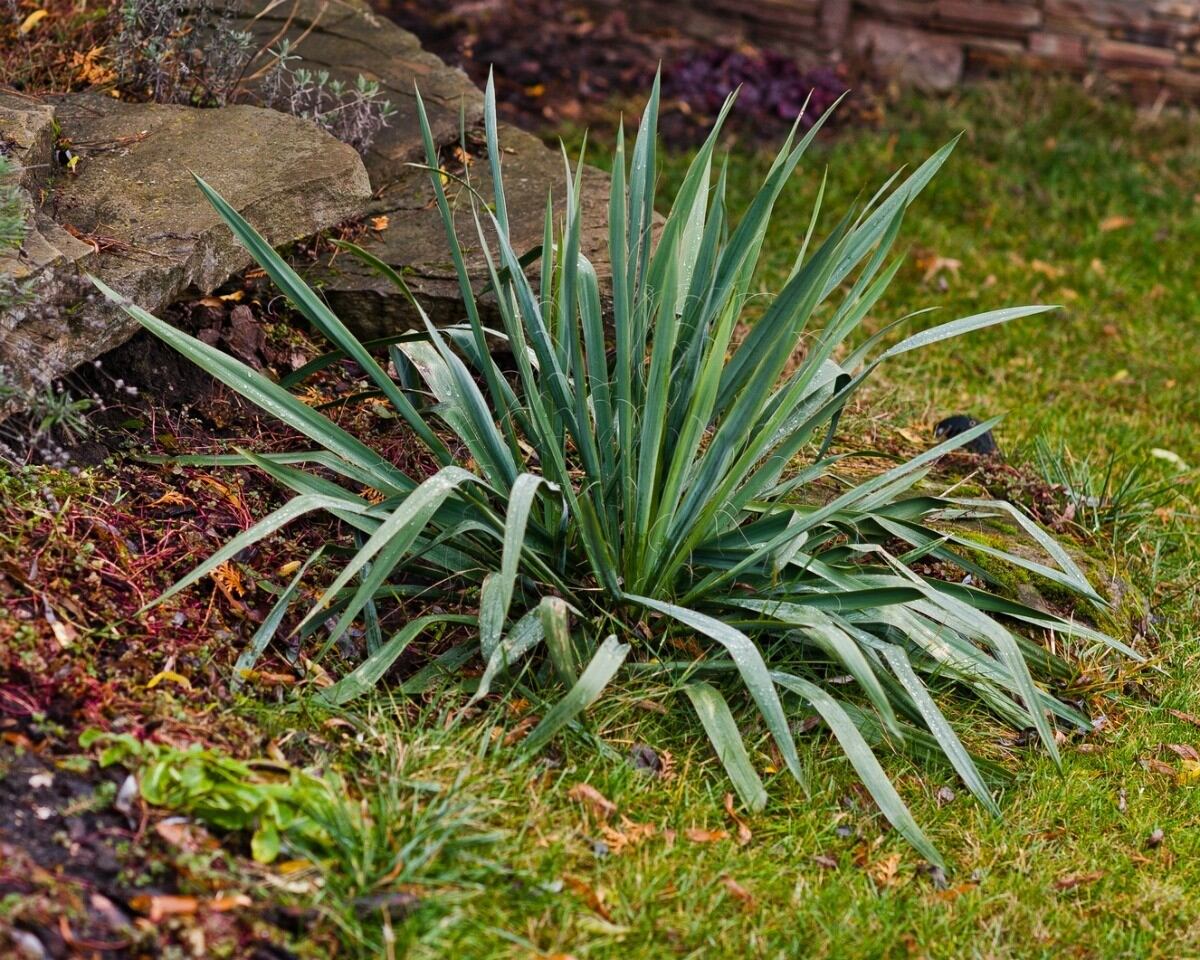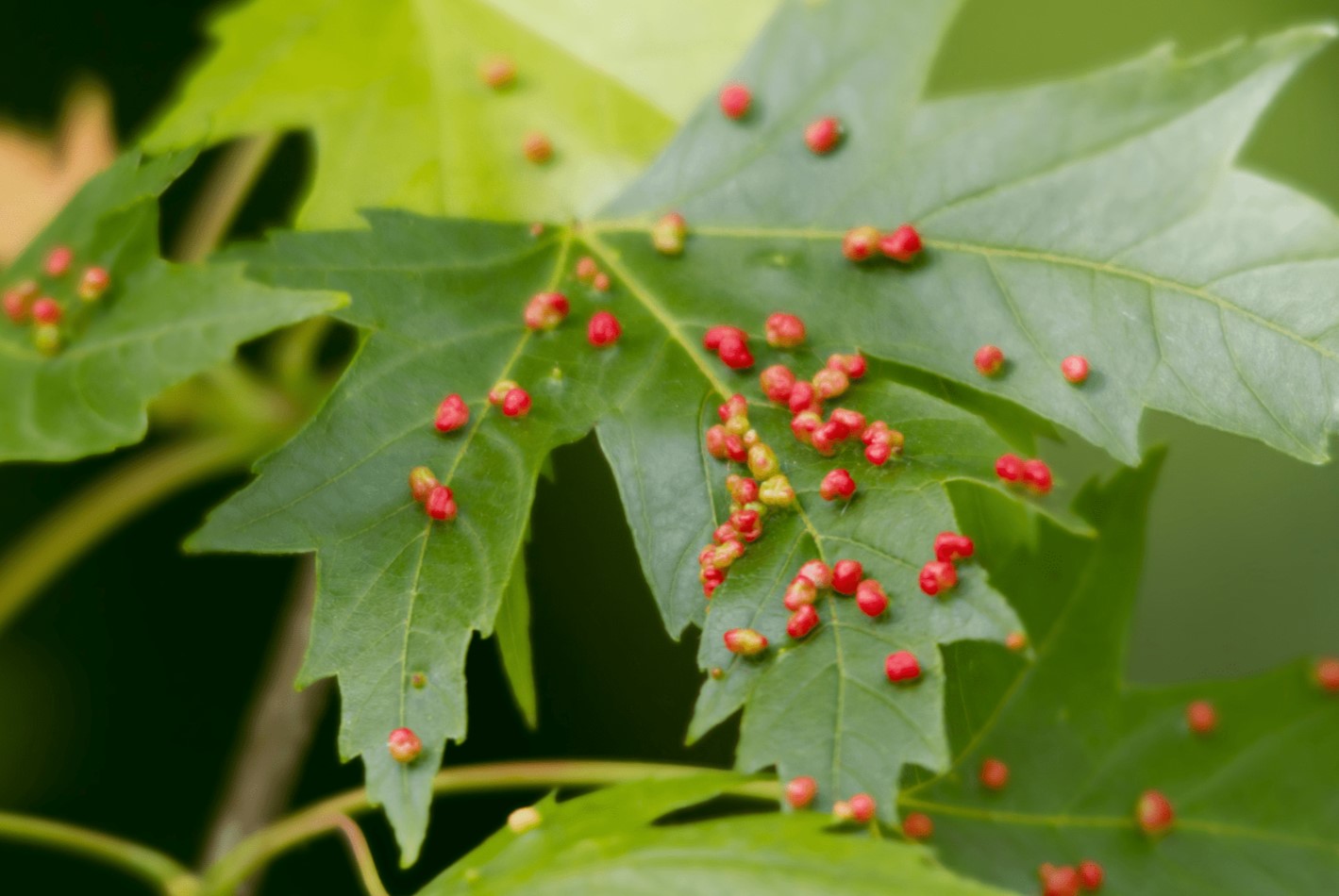Home>Gardening & Outdoor>Landscaping Ideas>How To Get Rid Of Johnson Grass


Landscaping Ideas
How To Get Rid Of Johnson Grass
Modified: October 20, 2024
Learn effective landscaping ideas to eliminate Johnson grass from your yard. Discover expert tips for eradicating this pesky weed and restoring your outdoor space.
(Many of the links in this article redirect to a specific reviewed product. Your purchase of these products through affiliate links helps to generate commission for Storables.com, at no extra cost. Learn more)
Introduction
Welcome to the ultimate guide on how to get rid of Johnson grass. Dealing with invasive weeds like Johnson grass can be a challenging task for any homeowner or landscaper. This resilient perennial grass, known for its fast growth and aggressive nature, has a remarkable ability to thrive in various conditions, making it a persistent nuisance for many gardeners.
In this comprehensive guide, we’ll explore effective methods for controlling and eradicating Johnson grass, ranging from manual removal to chemical and cultural control strategies. By understanding the nature of Johnson grass and implementing the right techniques, you can reclaim your landscape and protect your plants from this formidable intruder.
Whether you’re a seasoned gardener or just starting your landscaping journey, this guide will equip you with the knowledge and tools needed to combat Johnson grass and restore the health and beauty of your outdoor space.
Key Takeaways:
- Johnson grass is a tough weed, but you can beat it! Use manual removal, targeted herbicides, and smart landscaping to control and prevent its spread. Stay vigilant and proactive to reclaim your outdoor space.
- Preventing Johnson grass is as important as removing it. Inspect new plants, optimize soil health, and stay informed about weed management. With the right approach, you can keep your landscape beautiful and weed-free!
Read more: How To Get Rid Of Crabgrass
Understanding Johnson Grass
Before delving into eradication methods, it’s essential to grasp the characteristics of Johnson grass. Sorghum halepense, commonly known as Johnson grass, is a perennial grass species that originated from the Mediterranean region. Due to its aggressive growth and robust rhizome system, Johnson grass has earned a notorious reputation as a persistent weed in various climates.
Identifying Johnson grass is crucial for effective control. This weed typically features tall, coarse stems with broad leaves and a prominent midrib. Its extensive rhizome network enables rapid lateral spread, allowing it to colonize large areas and outcompete desirable plants for resources.
Johnson grass thrives in a wide range of soil types and environmental conditions, making it adaptable and resilient. Its ability to withstand drought and poor soil fertility further contributes to its tenacious presence in landscapes and agricultural settings.
Understanding the life cycle of Johnson grass is key to developing a targeted eradication strategy. This grass reproduces through seeds and rhizomes, ensuring its persistence and regrowth even after attempts to remove it. Additionally, the rhizomes can remain dormant in the soil for extended periods, posing a long-term threat to the integrity of the landscape.
By comprehending the growth habits and reproductive mechanisms of Johnson grass, you can tailor your approach to effectively combat and eliminate this invasive weed. In the following sections, we’ll explore various methods for controlling and eradicating Johnson grass, empowering you to reclaim your outdoor space and restore its natural beauty.
Manual Removal
Manual removal is a fundamental yet labor-intensive approach to combating Johnson grass. This method involves physically uprooting the grass and its rhizomes from the soil, aiming to eliminate its regenerative capacity and restrict its spread.
Before initiating manual removal, it’s crucial to equip yourself with the right tools, including a sturdy shovel, a digging fork, and gardening gloves. Begin by identifying the areas infested with Johnson grass, paying close attention to the extent of its rhizome network. Carefully excavate the soil around the base of the grass, ensuring that the entire rhizome system is extracted to prevent regrowth.
When manually removing Johnson grass, it’s essential to be thorough and persistent. Even small rhizome fragments left in the soil can lead to the resurgence of this resilient weed. Regular monitoring and repeated removal of any regrowth are vital to effectively suppress Johnson grass and prevent its reestablishment.
For larger infestations, consider using a sharp hoe to sever the rhizomes and minimize the grass’s ability to draw nutrients from the soil. This additional step can complement manual removal and enhance the overall efficacy of the eradication process.
Although manual removal demands considerable time and effort, it offers several advantages. It allows for targeted intervention, minimizing the impact on surrounding vegetation and reducing the reliance on chemical control methods. Moreover, by physically engaging with the landscape, you gain a deeper understanding of the extent of the infestation and can tailor your approach accordingly.
While manual removal can be a viable initial strategy for combating Johnson grass, it may not be sufficient for extensive or persistent infestations. In such cases, integrating manual removal with other control methods, such as chemical and cultural approaches, can yield more comprehensive and lasting results.
By incorporating manual removal into your weed management practices, you demonstrate a proactive commitment to preserving the health and aesthetics of your landscape while minimizing the impact of invasive species like Johnson grass.
Chemical Control
Chemical control methods offer an effective approach to managing Johnson grass infestations, particularly in cases where manual removal alone may be insufficient. By strategically applying herbicides, you can target the weed’s growth and reproductive mechanisms, ultimately suppressing its vigor and preventing regrowth.
When considering chemical control for Johnson grass, it’s crucial to select herbicides that specifically target grassy weeds while minimizing harm to desirable plants. Selective herbicides containing active ingredients such as sethoxydim or fluazifop-p-butyl are effective in combating Johnson grass while preserving the integrity of ornamental plants and turf grasses.
Prior to applying herbicides, carefully read and follow the manufacturer’s instructions, ensuring proper dilution and application rates. Timing is also critical, as targeting Johnson grass during its active growth phase maximizes the herbicide’s impact and enhances overall control efficacy.
For localized infestations, spot treatment with a targeted herbicide can effectively manage Johnson grass without adversely affecting surrounding vegetation. This method minimizes herbicide usage while concentrating the control efforts on specific areas of concern.
In cases of widespread infestation, broadcast application of herbicides may be necessary to achieve comprehensive control. This approach requires meticulous planning and adherence to safety guidelines to minimize environmental impact and ensure effective suppression of Johnson grass across the affected area.
It’s important to note that while chemical control offers a potent means of managing Johnson grass, it should be approached with caution and responsibility. Careful consideration of environmental factors, such as proximity to water bodies and the presence of non-target species, is essential to mitigate potential harm and uphold ecological balance.
Integrating chemical control with other management strategies, such as manual removal and cultural practices, can enhance the overall efficacy of Johnson grass eradication. By adopting an integrated approach, you can address the weed infestation from multiple angles, increasing the likelihood of sustained control and preventing resurgence.
When employing chemical control methods, it’s advisable to stay informed about local regulations and restrictions regarding herbicide use, ensuring compliance with established guidelines and contributing to responsible weed management practices.
To get rid of Johnson grass, regularly mow and remove any new shoots. Apply a selective herbicide in early summer or fall to target the roots. Be persistent as it may take multiple treatments to fully eliminate.
Cultural Control
Implementing cultural control measures is an integral aspect of managing Johnson grass infestations, offering sustainable and proactive strategies to suppress its growth and prevent reestablishment. By leveraging cultural practices that promote a healthy and competitive landscape, you can create conditions that inhibit the proliferation of this invasive weed.
One fundamental cultural control method involves optimizing soil health and fertility to favor the growth of desirable plants while impeding the vigor of Johnson grass. Conducting soil tests to assess nutrient levels and pH can provide valuable insights for implementing targeted amendments that support the vitality of ornamental plants and grasses, creating an environment less conducive to the persistence of Johnson grass.
Utilizing mulch as a protective barrier can effectively impede the growth of Johnson grass and inhibit its ability to colonize open spaces. Applying a layer of organic mulch, such as wood chips or straw, around ornamental plants and garden beds not only conserves soil moisture and moderates temperature but also creates a physical impediment that hinders the emergence and spread of Johnson grass.
Integrating competitive planting schemes that emphasize the use of vigorous ground covers and dense ornamental plants can outcompete Johnson grass, limiting its access to essential resources and space for expansion. Strategic landscaping that maximizes plant diversity and canopy coverage contributes to a dynamic and resilient ecosystem, reducing the opportunities for Johnson grass to establish dominance.
Regular monitoring and prompt intervention are essential components of cultural control, enabling early detection of Johnson grass infestations and facilitating timely management actions. By staying vigilant and addressing incipient weed growth, you can prevent the escalation of infestations and minimize the impact of Johnson grass on the overall landscape.
Engaging in proper landscape maintenance practices, such as timely mowing and pruning, can disrupt the growth and reproductive cycle of Johnson grass, reducing its seed production and limiting its spread. Consistent upkeep of the landscape not only enhances its aesthetic appeal but also contributes to the suppression of invasive weeds, including Johnson grass.
By embracing cultural control methods as an integral part of your landscape management approach, you foster a resilient and balanced outdoor environment that is less susceptible to the encroachment of Johnson grass. These proactive measures not only contribute to the long-term suppression of invasive weeds but also promote the overall health and sustainability of your landscape.
Read more: How To Get Rid Of Grasshoppers
Prevention
Prevention plays a pivotal role in managing Johnson grass and mitigating its impact on landscapes and agricultural areas. By implementing proactive measures to prevent the introduction and spread of this invasive weed, you can safeguard the integrity of your outdoor spaces and minimize the need for intensive control efforts.
One fundamental aspect of prevention involves exercising vigilance when introducing new plants and materials to your landscape. Thoroughly inspecting and sourcing plantings from reputable nurseries can help prevent the inadvertent introduction of Johnson grass and other invasive species, reducing the risk of infestations from the outset.
Implementing robust landscape design principles that prioritize plant diversity and strategic spacing can create a less hospitable environment for the establishment of Johnson grass. By carefully planning and diversifying your plant selections, you can reduce the vulnerability of your landscape to weed encroachment and enhance its resilience against invasive species.
Regular landscape maintenance, including the removal of plant debris and weed monitoring, is essential for preventing the spread of Johnson grass and other invasive weeds. Promptly removing any Johnson grass seedlings and rhizome fragments that may have infiltrated the landscape can curtail their establishment and prevent the escalation of infestations.
Engaging in responsible soil management practices, such as proper irrigation and drainage, contributes to the overall health of the landscape while minimizing conditions favorable to the proliferation of Johnson grass. By optimizing soil moisture levels and promoting aeration, you create an environment that is less conducive to the growth and spread of invasive weeds.
Educating yourself and others about the identification and management of Johnson grass is a proactive step toward prevention. By staying informed about the characteristics and behavior of this invasive weed, you can enhance your ability to detect and address potential infestations early, preventing the substantial spread and impact of Johnson grass in your landscape.
Collaborating with local extension services and horticultural experts can provide valuable insights and guidance on effective prevention strategies tailored to your specific region and landscape conditions. Leveraging expert knowledge and resources empowers you to proactively address potential weed threats and implement targeted measures to prevent Johnson grass infestations.
By integrating prevention practices into your landscape management approach, you demonstrate a commitment to preserving the health and aesthetics of your outdoor spaces while minimizing the disruptive impact of invasive weeds like Johnson grass. Proactive prevention not only reduces the need for extensive control measures but also fosters a resilient and sustainable landscape that is less susceptible to invasive species.
Conclusion
Managing and eradicating Johnson grass requires a multifaceted approach that integrates various control methods and proactive strategies. By understanding the characteristics and growth habits of this invasive weed, you can develop targeted interventions to effectively suppress its vigor and prevent reinfestation.
Manual removal serves as a foundational method for combating Johnson grass, allowing for targeted intervention and minimizing the impact on surrounding vegetation. While labor-intensive, this approach offers the advantage of precision and a deeper understanding of the extent of the infestation.
Chemical control methods provide a potent means of managing Johnson grass infestations, offering selective herbicides that target the weed while preserving desirable plants. Careful application and adherence to safety guidelines are essential to maximize efficacy and minimize environmental impact.
Cultural control measures play a crucial role in creating a landscape that is less susceptible to the encroachment of Johnson grass. By optimizing soil health, utilizing mulch, and promoting competitive planting schemes, you can foster a resilient and balanced ecosystem that inhibits the proliferation of invasive weeds.
Prevention is key to mitigating the impact of Johnson grass and reducing the need for intensive control efforts. By exercising vigilance when introducing new plants, embracing responsible landscape design, and engaging in proactive maintenance practices, you can create an environment that is less hospitable to invasive species.
In conclusion, combating Johnson grass demands a proactive and integrated approach that encompasses manual, chemical, and cultural control methods, supported by vigilant prevention practices. By adopting a comprehensive strategy that addresses the root causes of infestations and promotes landscape resilience, you can effectively manage Johnson grass and preserve the health and beauty of your outdoor spaces.
Frequently Asked Questions about How To Get Rid Of Johnson Grass
Was this page helpful?
At Storables.com, we guarantee accurate and reliable information. Our content, validated by Expert Board Contributors, is crafted following stringent Editorial Policies. We're committed to providing you with well-researched, expert-backed insights for all your informational needs.















0 thoughts on “How To Get Rid Of Johnson Grass”